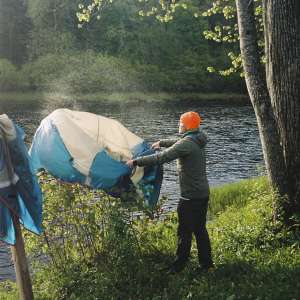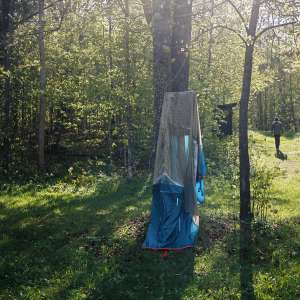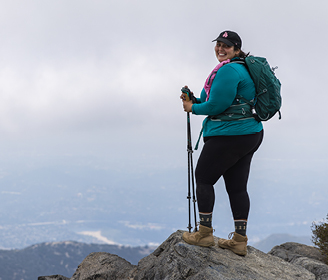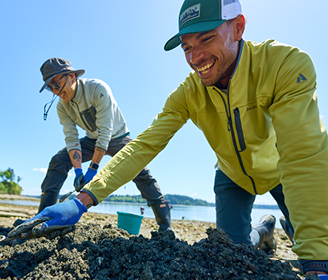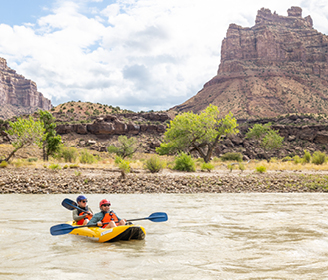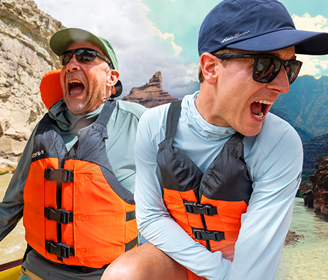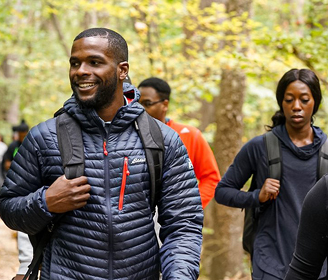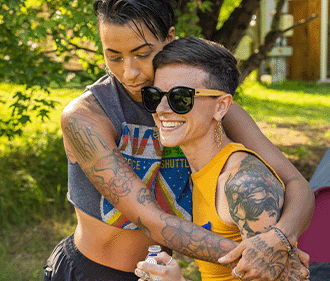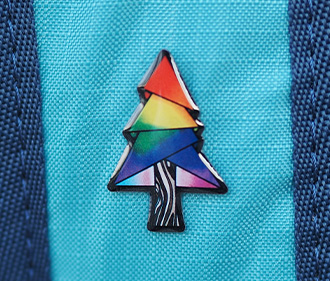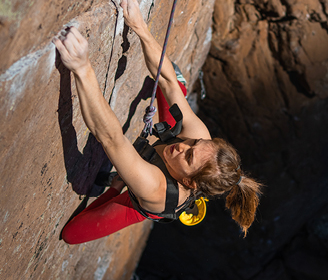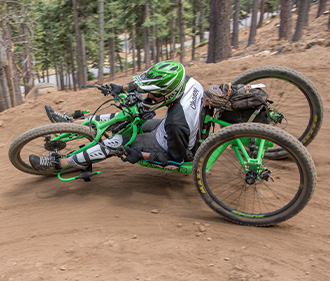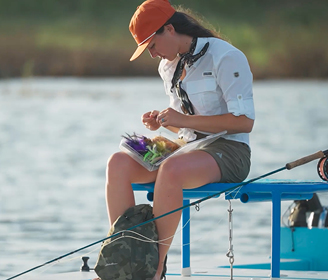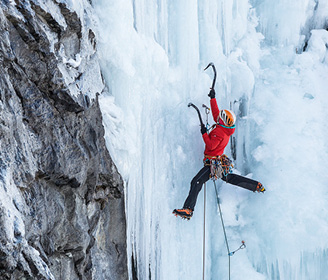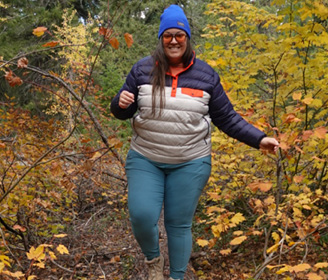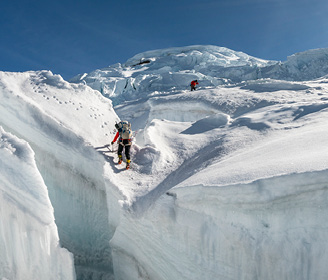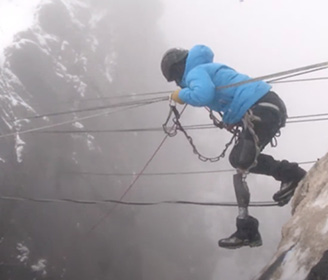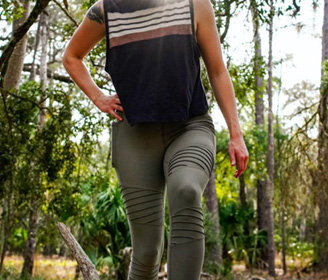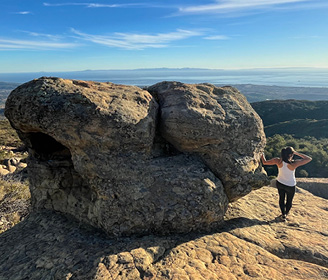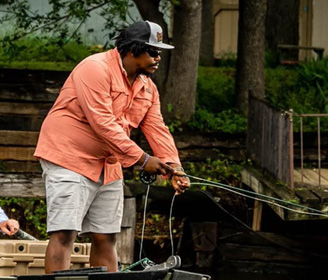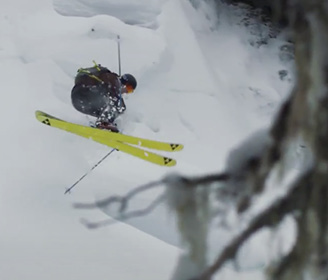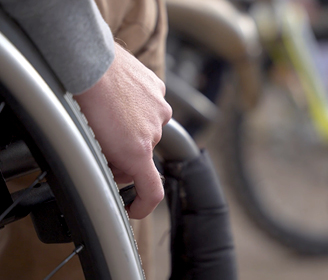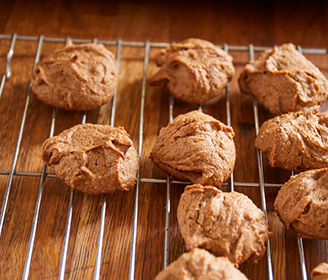Day 4 – Paddle from Forks Campsite to Flambeau Lodge, and travel back to Minneapolis, MN
No banging pots to wake the camp this morning. Just the sound of birds singing to the flowing of the river.
We enjoyed my favorite breakfast – granola, fruit, and other toppings, before going straight into breaking down camp. While packing the boats we had a chance to witness another white-tailed deer crossing the river at the confluence. I like to believe this was a sign and the confluence telling us farewell.
Today’s goals were:
1. Safely tackling our first big whitewater
2. Enjoying the paddle to the Flambeau Lodge
3. Shuttling to the put-in to pick up the other vehicle
4. Unloading gear and boats at Tiner’s place
5. pushing back to Minneapolis to catch our flights in the morning.
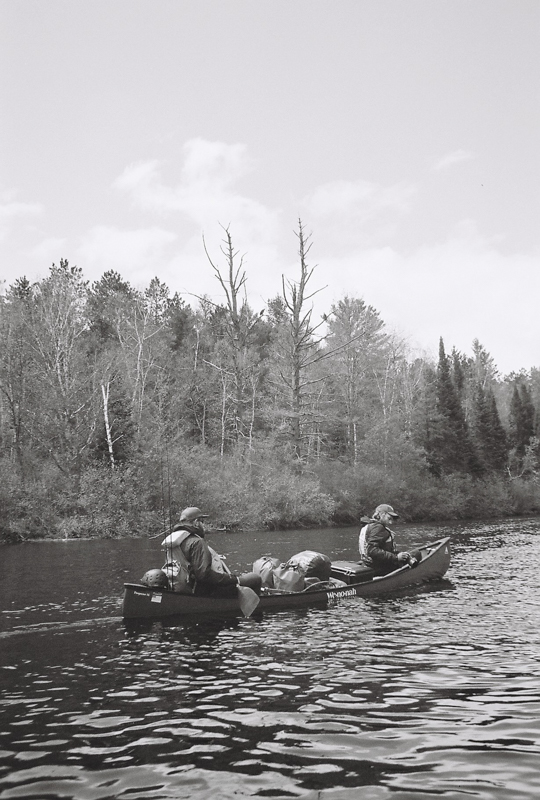
The first 2 miles of this stretch of river were calm, until our ears began to pick up the faint roaring off in the distance. As we etched closer, the river appeared to drop off. Finally, the moment we’ve been anticipating since we began planning this expedition – when the Flambeau River was nothing more than several characters of an idea on an email thread. This would be our first “big rapid” of the trip – First Cedar Rapids, debatably rated between a II and a III.
We pulled into the Cedar Campsite, which was right above the rapid, to scout. We wanted to properly assess every feature of the rapid before running it – possible entrances, the tongues which are smooth and fast water that forms the shape of a “v”, eddies that form on the downstream side of obstacles, where water can be shielded from the force of the main current), waves, holes (created by the river flowing over large underwater features), and any other hazards. At this point I hadn’t scouted a rapid since I was a whitewater raft guide on the American River back in 2015. Hence, I relied on Chris’ expertise and knowledge as a refresher of sorts. And surely, as we determined our game plan for deciding our line (the route you want to paddle once you’re in the rapid), all the knowledge from my days as a guide began rushing back.
Chris and I returned to our canoe to prepare. We slipped on our PFDs (personal flotation devices, known to most as “life-jackets”), and clipped on our helmets so that they were snug. We also tucked any loose items that were in the canoe away and made sure that our bilge pump, spare paddle, and safety rope were accessible. Lastly, we interlocked our bags with carabiners – in the event that we flipped, we didn’t want to chase down multiple bags.

As we swung out wide to “T” up directly with our line, my heart began to race. I blissfully thought back to my rafting trips in the Grand Canyon. But, the reeling feeling also edged on fear as I was taken back to my BWCA mishap of the canoe being pinned and gouged at the center. Oh yeah, I left that detail out earlier.
Back when the accident happened we floated sideways into the rapid, unable to grasp control. Two boulders caught us. One holding the stern, and the other constricting the bow – watching as the river began slowly wrapping the canoe. This caused a gash in the center of the aluminum watercraft to appear. The river erupted into our boat like a volcano and began pooling around our ankles which made us take a swift exit, leaving the canoe to fend for itself.
Back to reality, I let the soft mist kissing my face wash away any doubts. Extreme adventurer, whitewater expert, and global waterfall paddler, Chris Korbulic was in the stern. I was in good, if not the best hands. Chris is a soft talker, so I turned my head to the side and yelled to him not to be afraid to use his river voice if things get dicey. I also went ahead and gave him permission to be as blunt as he wanted when calling out the shots. When you’re in the rapid, there’s no time for please and thank you’s. Short and concise language is the most optimal way to communicate i.e.: “Hard Forward! Back Left! Highside! Stop!”
I readied my paddle, and reached forward to hit the record button on the GoPro we had fixed to the bow. Then we dropped down the tongue of the rapid.
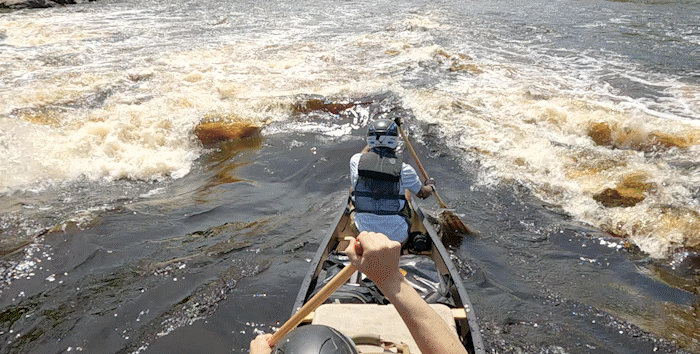
Honestly, I barely had to paddle, which is the case in a lot of lower rated rapids. Too much power could oftentimes place you somewhere you don’t want to be. However, the rapid was still technical enough that if something went wrong, it had the chance of going very wrong.
Chris curved us around a hole after we paddled through a couple of lateral waves, before safely tucking us in an eddy so that we could watch Tiner and Matthew’s run. We wanted to make sure we were close enough that if things went sideways, we were nearby to assist. However, since they had pulled out the camera equipment to catch our run, we knew it would be a while before they came down. We took the extra time to pull our canoe on the bank of the island splitting the river. Our curious minds wanted to discern what the other side had to offer. The left channel had a giant tongue going down the middle into a large standing wave preceded by a wave train (series of standing waves).
Seeing their bright red canoe push off from shore, we meandered back to our boat to catch them in action. They ran the rapid like pros. We all let out a yell in celebration.
The next series of rapids were Cedar Rapids 2, 3, and 4. Our maps and reading material put these rapids at the same rating as Cedar Rapids 1, but they only offered a little chop. These were rapids that you could run without getting out to scout as the whitewater was more textured than roaring.
We decided to do lunch at the top of our second to last rapid which was coming up – Beaver Dam Rapids, rated a II-III. We pulled off the river into a small nook to our left. There was a scouting trail that took you down past the rapid. My stomach was still feeling a little woozy, so I opted out of lunch. I knew the trip was ending in a couple hours and fasting felt like a better decision. I found a flat boulder at the tip of the rapid that I laid down on as everyone else ate. As we identified the features in the rapid, we narrowed it down to two lines. The center line had a significant drop, while a line off to the far right was more of a sneak-around that dodged the center drop and wave train for some smaller ripples. Today was our last day and so far, we had one good run so it was pretty much decided that we would be going big (and home).

We returned to our boats, already whitewater ready and embarked down the smooth “v” shaped entrance to the center. Chris told me that we didn’t want a lot of power so I needed to take it easy in the bow for this one. We dropped in and for a slight moment I felt air under the canoe. The wave train bucked us up and down like wild bronco. We caught a large eddy off to our right downriver behind a boulder to wait for Matthew and Tiner. I remember my forearms burning as I held on to the boulder as the flow of water tried to spit us back into the rapid. With our paddling companions at the mouth of the rapid, we let go to swing around and record their entire run with a GoPro we had strapped up high in the stern. As we pivoted off the rock, I understood Chris’ decision to paddle in easy. After crashing through the first wave the stern of Tiner and Matthew’s canoe slammed down, flooding in the process. Within a couple moments they were swimming alongside the gear, and we had to chase down Tiner’s hat which was making a clean getaway. After securing the hat, we grabbed the bags closest to our boat as Tiner swam to shore with the rest of them. Matthew stayed behind with their canoe, now in shallow water bilge pumping it out. Chris and I pulled our boat ashore and walked a hundred or so yards to where Matthew was. We got most of the water out and then the three of us boarded the canoe to float down to where we left Tiner and the rest of our gear. After catching a breath, sharing some laughs, and repacking their boat, we departed for our final run – Little Cedar Rapids.

Unbeknownst to me at the time, that scouting trail above Beaver Dam Rapids was actually a portage trail. I later learned that it is highly recommended to portage around this rapid since the drop on it is so massive. There’s even a red warning sign denoting hazardous features in the 5th Edition of the “Paddle the Flambeau River” booklet.
Continuing to live our adventure, we came upon a little ripple in the river that ended up being Little Cedar Rapids (also called Pine Island Rapids), rated at a I, and appropriately so. The next 2 miles were nice swift currents before the river basically transformed into a murky pool as it widened up into Big Falls Flowage. For 3 incredibly long miles we slogged, often checking to make sure we were not dragging anything. Paddling or not, it barely felt like we were moving. On top of that, the high sun beamed down, eviscerating every piece of shade on the river. Even the breeze stopped.
These last couple miles to the Flambeau Lodge were something else. Seeing the docked pontoon boats and the Heileman’s Old Style Brewery sign in the distance was like the bittersweet light at the end of the tunnel. It signaled that A/C heaven was approaching, but our expedition was ending.

We pulled off the river at approximately 4:00pm, loaded our gear, racked the canoes, and shuttled back to our original put-in to pick up the other vehicle. We arrived at the put-in and were welcomed by the send off party – the mosquitoes. By the time we re-racked the canoe and split up gear, the bittersweet feeling just turned sweet. I was happy to be done, shielded from the elements, kicking back in A/C heaven.
With our final long day of travel ahead of us, we made a bee-line back to Tiner’s place to drop off gear and canoes, before grabbing a bite to eat at the last decent place open on a Tuesday night in Eau Claire, Wisconsin. Our final task – having a safe journey back to Minneapolis to depart for our flights in the morning.
We arrived at our hotel a little after midnight, said our goodbyes, and retreated to our rooms, trading a billion-star accommodations for 4 stars.

Read Part 1 of Ron’s Adventure
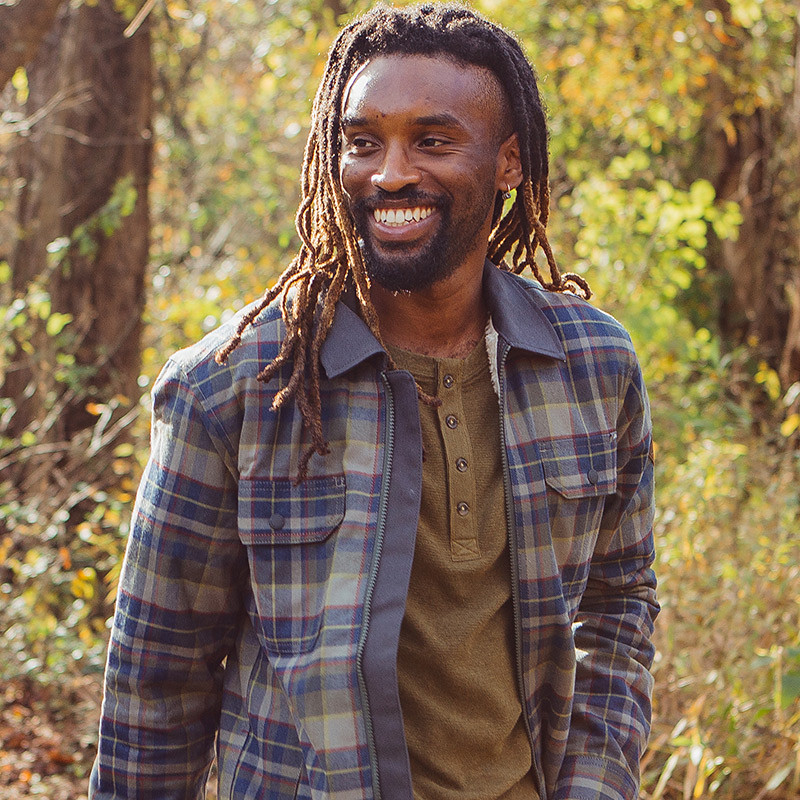
RON GRISWELL
Community Leader
Ron is an explorer, educator, and trailblazer in the outdoor industry. Frustrated by the lack of diversity in the outdoor industry, Ron founded HBCUs Outside as a bridge between the outdoor industry and students at historically Black colleges and universities. The goal is to promote wellness through outdoor activity, and also to create an interface between the industry and the talent pool that the HBCU students represent.

